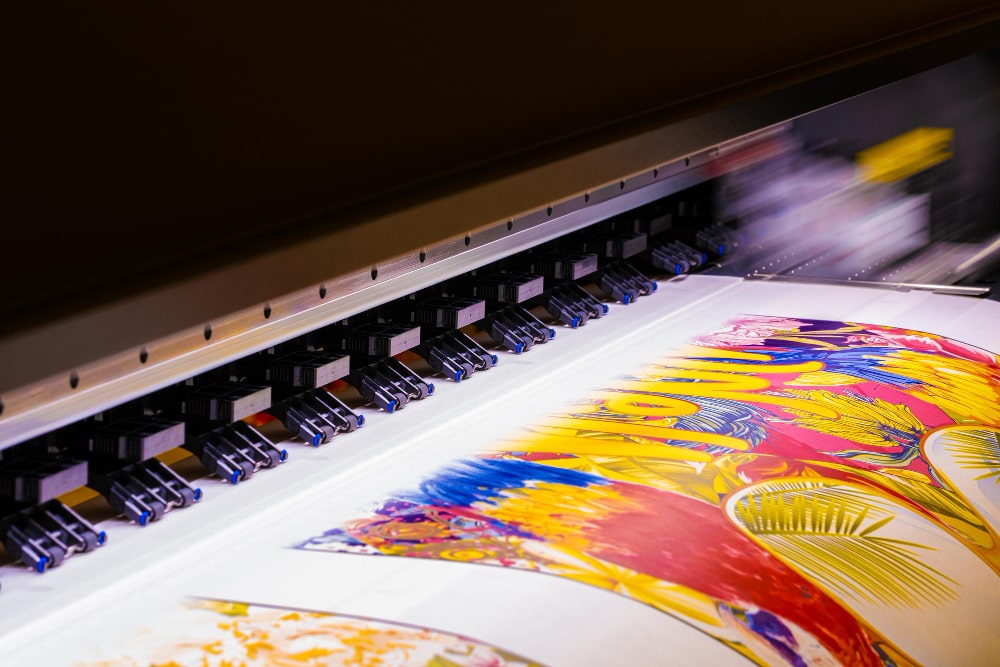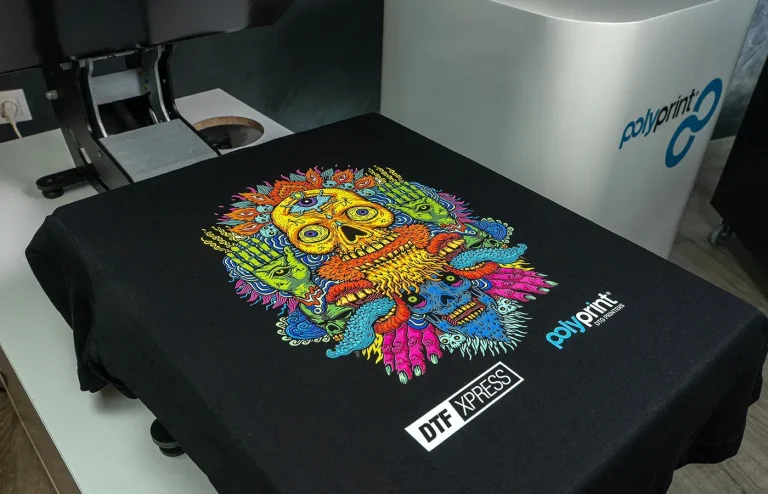DTF Process: Step-by-Step Guide to Perfect Transfers
The DTF process, or Direct-to-Film printing, has emerged as a game-changer in the realm of custom transfers, providing vibrant and durable prints for various fabric types. This innovative fabric printing process simplifies the application of complex designs while enhancing the creative possibilities for apparel makers. As we delve into the intricacies of DTF printing, this guide aims to equip you with the essential knowledge to master each step of the process, from design creation to the final transfer. With its exceptional color reproduction and versatility, DTF applications are quickly becoming a favorite among textile enthusiasts and professionals alike. Join us as we explore how this method can elevate your custom apparel projects to new heights.
In contemporary fabric printing, Direct-to-Film (DTF) techniques, also known as transfer film methods, are revolutionizing how designs are applied to garments. These approaches utilize specialized film to produce high-quality, custom transfers that adhere seamlessly to a wide range of textiles. The ability to achieve intricate designs with vivid colors makes these printing methods incredibly popular for personalized clothing, promotional items, and unique merchandise. This comprehensive guide will provide insights into the DTF procedure, from the initial design phase to the final application, ensuring that your creations stand out in a crowded market. Embrace the possibilities offered by DTF as we unfold this transformative journey in custom printing.
Understanding the DTF Printing Process
Direct-to-Film (DTF) printing is a modern and efficient method for creating high-quality custom transfers. This process involves printing your designs directly onto a specialized film, which can then be applied to various fabrics. What sets DTF apart from other printing techniques is its ability to produce vibrant colors with incredible detail, making it ideal for detailed artwork and designs. The procedure not only ensures color fidelity but also adds versatility, as the transfers can be used on different fabric types including cotton, polyesters, and blends.
The DTF printing process is also remarkably user-friendly, requiring minimal setups compared to traditional methods like screen printing. For anyone looking to delve into the world of custom apparel, understanding DTF is crucial as it represents a significant advancement in fabric printing technology. The seamless integration of digital designs with easy transfer application means that creators can focus more on innovation rather than printing limitations.
Key Steps in the DTF Printing Process
The DTF printing process consists of several critical steps that ensure the final transfer is of superior quality. Starting with design creation, it is vital to use graphic software tools to finalize your artwork, ensuring that it is saved in a suitable format. Once the design is complete, it’s printed onto a special transfer film. The choice of DTF printer plays a significant role at this stage as only specific printers are designed to handle the unique requirements of this printing method, utilizing water-based pigments for vibrant outcomes.
After printing, applying a hot-melt adhesive powder is necessary for ensuring the ink adheres well to the film. This step is pivotal as it greatly affects the durability and quality of the final transfer. After powder application, a curing phase takes place, where heat is used to solidify the powder and prepare the design for application on fabric. The entire process is tailored to achieve optimal results for the transfer, highlighting the importance of each step meticulously executed.
The Benefits of Using DTF Transfers
DTF transfers have significantly revolutionized the custom apparel industry due to their impressive benefits. One of the most compelling advantages of DTF printing is its capability to cater to a wide range of fabric types. Whether you are printing on cotton for t-shirts or on polyester materials, DTF technology ensures that colors remain vibrant and designs maintain their integrity after numerous washes. This characteristic makes DTF an attractive option for businesses looking to produce quality apparel without sacrificing time.
Moreover, DTF printing is increasingly recognized for its cost-effectiveness, particularly as the price of DTF supplies continues to decrease. This means that even small business owners and DIY enthusiasts can access the benefits of this printing technique without excessive investment. The combination of affordability and high quality makes DTF a standout choice in the plethora of fabric printing processes.
Design Creation and Preparation for DTF Transfers
The initial phase of the DTF process revolves around design creation, which establishes the foundation for a successful transfer outcome. Artists and designers often utilize professional software tools like Adobe Illustrator or Photoshop to create elaborate graphics and artwork tailored to the intended fabric. Being meticulous at this stage is key; designs should be formatted correctly with transparent backgrounds to guarantee clarity and precision during the transfer process.
Preparing the design also includes evaluating color selections and ensuring they translate well onto the applied fabric. This step is essential because some colors may change during the transfer process, and understanding how the fabric may react can help create a more accurate representation of the final output. Thus, laying the groundwork through strategic design creation sets the tone for achieving the perfect DTF print later.
Curing DTF Transfers for Maximum Durability
Curing is a crucial step in the DTF process that greatly enhances the longevity and performance of the printed designs. After the powder is applied to the printed film, the curing process involves subjecting the film to high temperatures, usually achieved with a heat press. This ensures that the adhesive powder properly bonds with the ink, creating a robust surface that can withstand multiple washes and wear.
Implementing effective curing techniques not only increases the quality of the transfer but also affirms the longevity of the print, making it an important consideration for any DTF project. This final curing phase reinforces the connection between the design and the fabric, preparing it for everyday use without fear of fading or peeling off over time. Understanding the importance of curing can significantly impact the final product’s quality when utilizing DTF technology.
Current Trends in DTF Printing Applications
As DTF printing continues to evolve, certain trends are shaping the landscape of its applications in the custom apparel market. One major trend is the increasing popularity of customized garments for personal use, such as unique designs for family events or personalized gifts. This move towards individual expression is empowering a new generation of creators who see the value in high-quality, custom transfers that DTF provides.
Additionally, many businesses have begun leveraging DTF technology for promotional materials, including branded merchandise. Companies recognize that appealing graphics on items like t-shirts, hoodies, and tote bags can enhance brand visibility and customer engagement. As more industries begin to adopt DTF processes, the versatility and quality provided by this printing method are likely to see an uptick in usage across different sectors.
Frequently Asked Questions
What is the DTF process in custom apparel printing?
The DTF process, or Direct-to-Film printing, involves producing high-quality transfers by printing designs onto a special transfer film, which is then applied to various fabrics using heat. This method is noted for its exceptional color vibrancy and flexibility, making it ideal for custom apparel.
How does DTF printing compare to traditional fabric printing processes?
DTF printing offers superior color reproduction and detail compared to traditional methods like screen printing. It simplifies the transfer application and is versatile enough to work on diverse fabrics such as cotton and polyester, surpassing other fabric printing processes in terms of flexibility and quality.
What are the key steps involved in the DTF printing process?
The key steps in the DTF printing process include design creation, film printing, powder application, curing the transfer, applying the transfer to fabric, peeling the film, and final curing. Each step is crucial to ensure the quality and durability of the custom transfers.
What types of materials can be used with DTF applications?
DTF applications can be utilized on a wide range of materials, including cotton, polyester, and various blends. This versatility makes DTF printing an excellent choice for custom designs on t-shirts, hoodies, bags, and more.
What are the advantages of using DTF printing for custom transfers?
The advantages of DTF printing include its cost-effectiveness, eco-friendliness due to the use of water-based inks, and the ability to produce intricate designs with vibrant colors. This process caters to both small and large production runs, making it a popular choice in the custom apparel market.
Is DTF printing suitable for beginners looking to create custom apparel?
Yes, DTF printing is suitable for beginners, as the process is straightforward and does not require extensive equipment. With the right tools and guidance, anyone can successfully create vibrant custom transfers for apparel using the DTF process.
| Step | Description |
|---|---|
| 1. Design Creation | Creating a design using compatible software like Adobe Illustrator or Photoshop, saving in PNG or TIFF with a transparent background. |
| 2. Film Printing | Utilizing a DTF printer to print the design on transfer film coated with polyethylene, using water-based pigment inks. |
| 3. Powder Application | Applying hot-melt adhesive powder over the wet ink to ensure that the design will adhere to the fabric. |
| 4. Curing the Transfer | Using a heat press to cure the transfer and solidify the adhesive, preparing it for application to the fabric. |
| 5. Transfer to Fabric | Applying the cured transfer film to the fabric using a heat press at optimal temperature settings (around 320°F for 10-15 seconds). |
| 6. Peeling the Film | After pressing, allow cooled transfer to peel the film away, revealing the design on the fabric. |
| 7. Final Curing | An additional curing step to enhance transfer durability, especially for heavily used fabrics. |
Summary
The DTF process is a revolutionary method in custom apparel printing that combines simplicity and versatility to achieve stunning results. By following the detailed steps of design creation, film printing, powder application, curing, transferring, peeling, and final curing, users can master the art of vibrant, durable fabric transfers. As DTF printing continues to evolve, it remains a favored choice for producing high-quality designs on diverse materials, empowering both small businesses and DIY enthusiasts to unleash their creativity with confidence.





